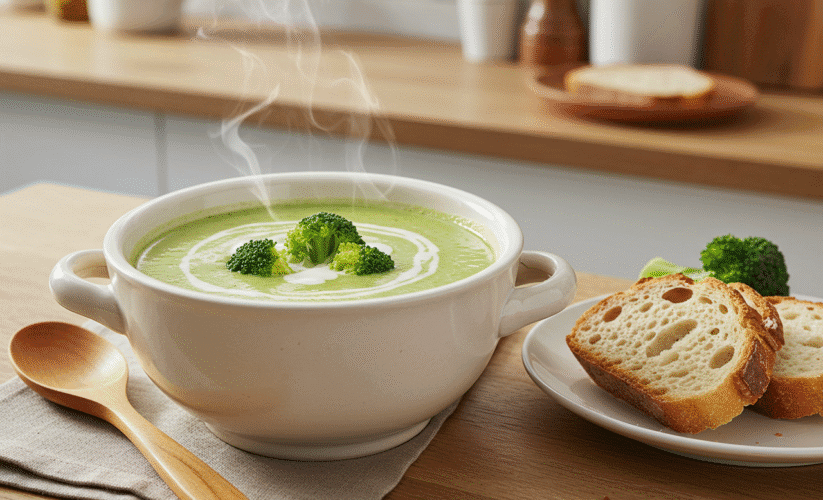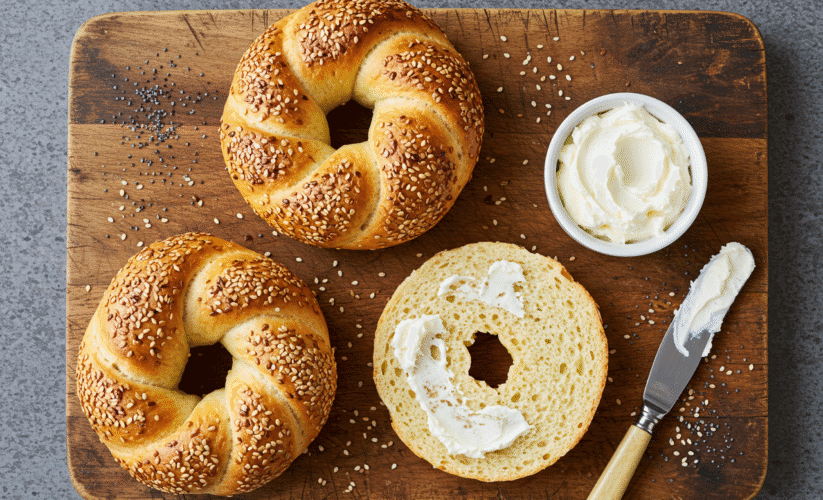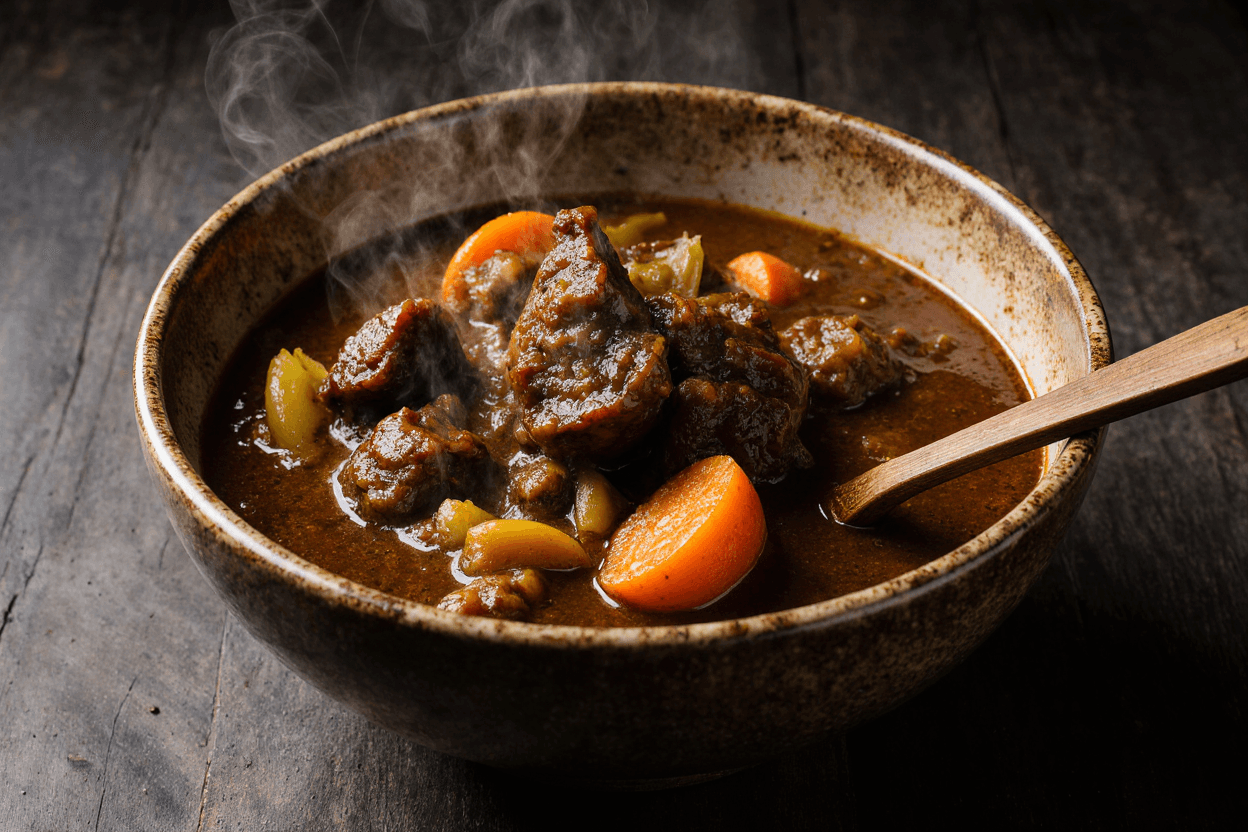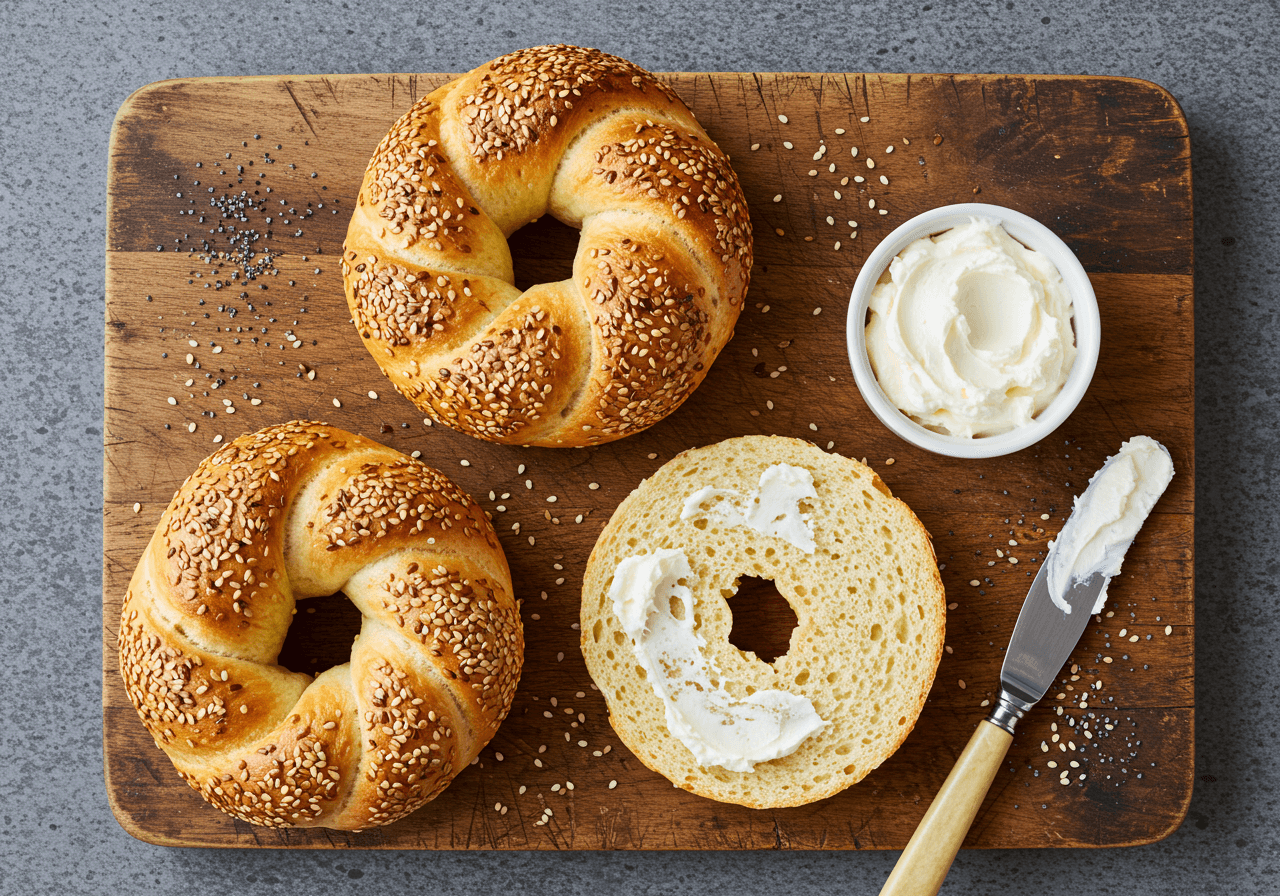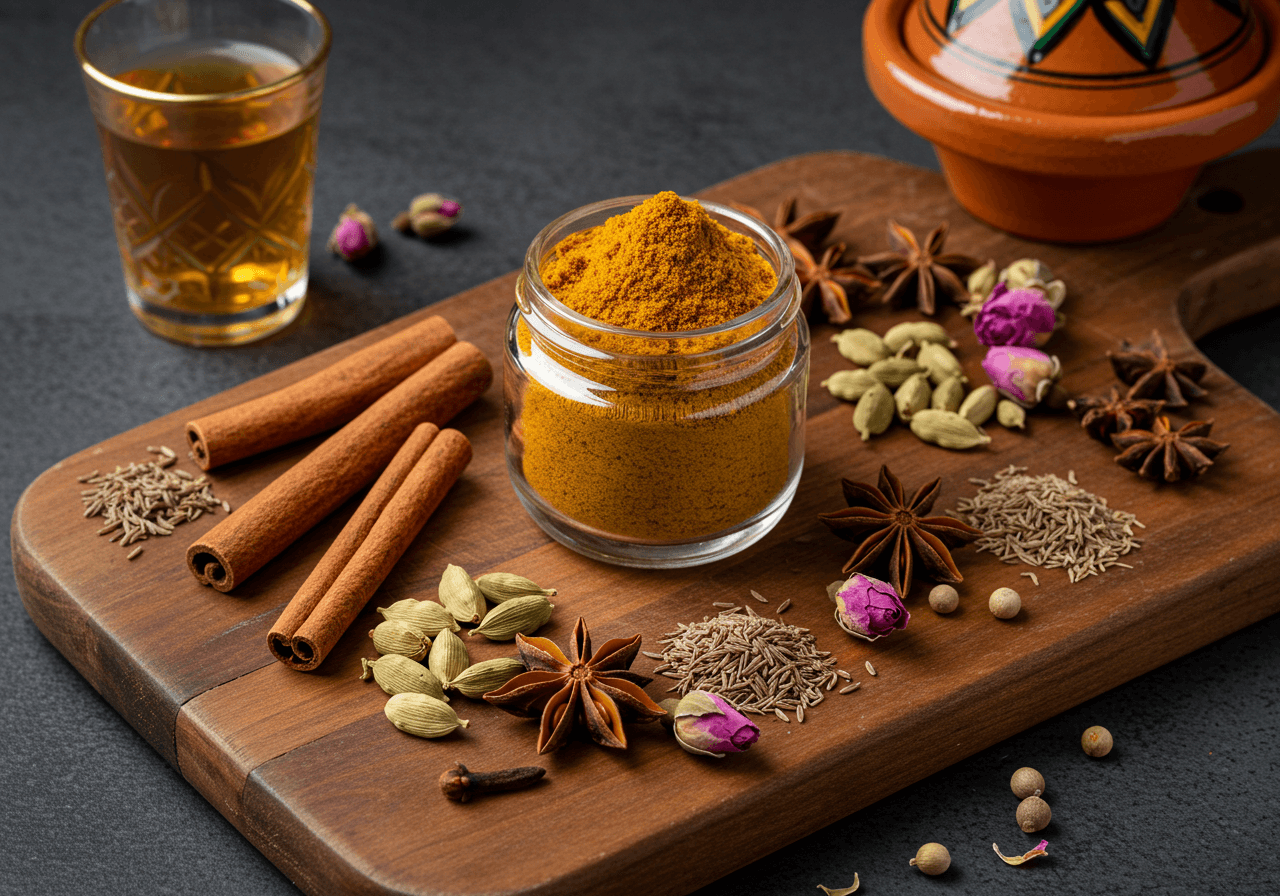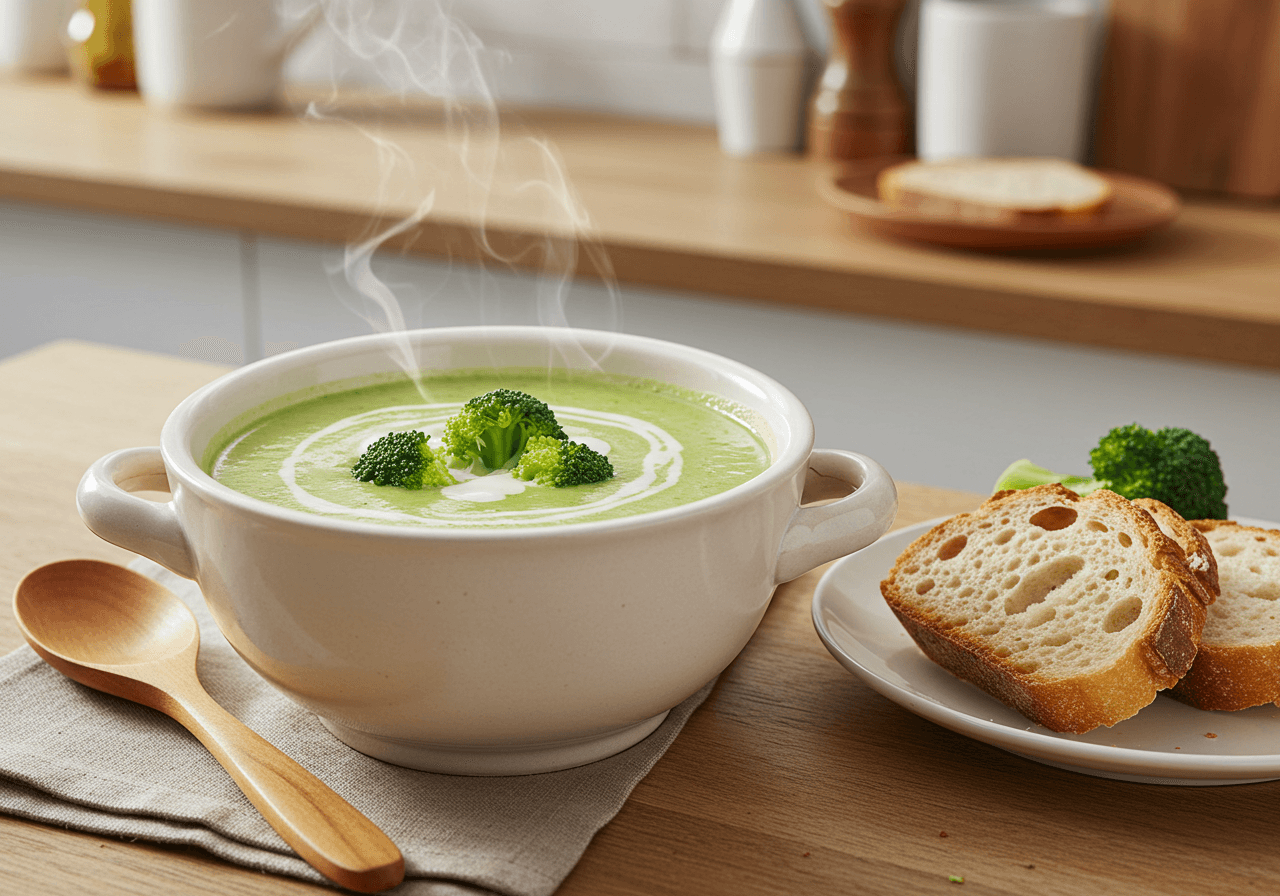Your DIY Moroccan Spice Mix Recipe: Unlock the Magic of Ras el Hanout
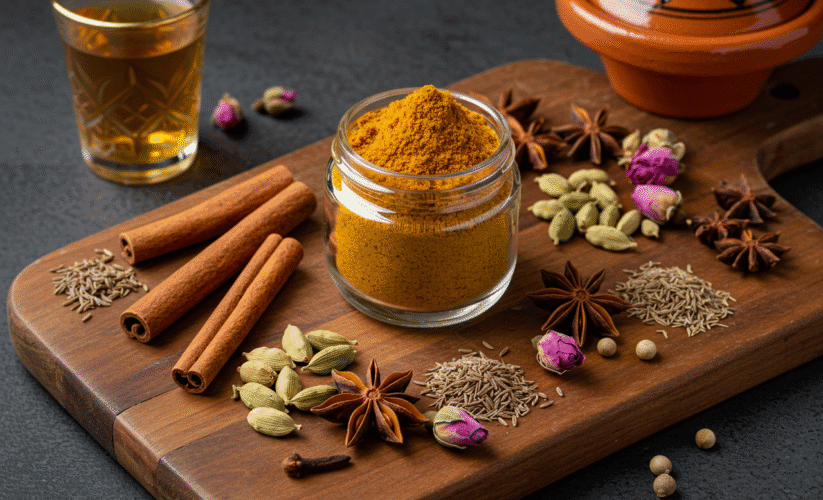
Introduction
Have you ever tasted a dish so complex and enchanting that you couldn’t quite figure out what made it so special? Chances are, you were experiencing the magic of a traditional Moroccan spice blend. For many home cooks, the world of spice mixes can feel intimidating—a secret club where chefs whisper about hard-to-find ingredients.
But what if I told you that the most celebrated Moroccan spice mix, known as Ras el Hanout (which translates to “head of the shop”), is something you can easily create in your own kitchen? This beginner-friendly guide will demystify this iconic blend. I’ll share my favorite mix recipe, explain the “why” behind each ingredient, and show you how a single jar of homemade spice can transform your cooking from simple to spectacular. Let’s unlock the flavors of Marrakech together!
Table of Contents
What is Ras el Hanout? More Than Just a Spice Mix
Before we dive into the mix recipe, let’s understand what we’re making. Ras el Hanout is the cornerstone of many Moroccan dishes. It’s a warm, aromatic, and subtly sweet blend that can include anywhere from a dozen to over thirty different spices.
Think of it not as a single recipe, but as a concept. Every family, every spice vendor in the souks, has their own signature version. There’s no one “right” way to make it, which is what makes creating your own so exciting! You’re not just following a recipe; you’re crafting a personalized flavor profile.
Why Make Your Own Moroccan Spice Blend?
You might be wondering, “Why not just buy a pre-made blend?” Here’s why taking the DIY route is a game-changer, especially for beginners:
- Unbeatable Freshness & Potency: Pre-ground spices lose their vibrancy quickly. Toasting and grinding whole spices just before blending releases their essential oils, resulting in a fragrance and flavor that is profoundly more complex than anything you can buy in a jar.
- Total Creative Control: Don’t love the intense heat of cayenne? Reduce it! Adore the smell of cardamom? Add more! This mix recipe is your canvas.
- Purity and Transparency: You control the quality of every ingredient and avoid any unwanted anti-caking agents or preservatives.
- Cost-Effective: While the initial investment in spices might seem high, making your own blend is far cheaper per teaspoon than buying premium pre-made versions.
Gathering Your Spice Squad: A Beginner’s Guide to the Ingredients
This is where the adventure begins. Don’t be daunted by the list! This mix recipe is designed to be flexible.
The Core Spices (The Non-Negotiables)
These spices form the heart and soul of a classic Ras el Hanout.
- Cumin Seeds (2 tbsp): Provides an earthy, warm base note.
- Coriander Seeds (2 tbsp): Offers a mild, citrusy, and slightly sweet flavor.
- Ginger (1 tbsp ground): Adds a warm, peppery zing.
- Turmeric (1 tbsp ground): Contributes a golden color and an earthy, slightly bitter note.
- Cinnamon (1 tsp ground, or 1 small cinnamon stick, broken): The source of warm, sweet complexity.
- Black Peppercorns (1 tsp): For a sharp, penetrating heat.
The Aromatic Enhancers (The “Wow” Factor)
These spices elevate the blend to something truly special.
- Cardamom Pods (1 tsp, crushed to reveal seeds): Provides a captivating floral and citrus aroma.
- Allspice Berries (1 tsp): Tastes like a combination of cinnamon, nutmeg, and cloves.
- Cloves (½ tsp): Use sparingly! They offer a powerful, sweet, and camphorous warmth.
- Nutmeg (½ tsp, freshly grated): Adds a rich, nutty sweetness.
- Sweet Paprika (1 tbsp): Doesn’t add much heat, but gives the blend a beautiful red hue and a sweet pepper flavor.
Optional, for the adventurous:
- Star Anise (1 pod): For a sweet, licorice-like note.
- Cayenne Pepper (a pinch): If you want a subtle kick of heat.
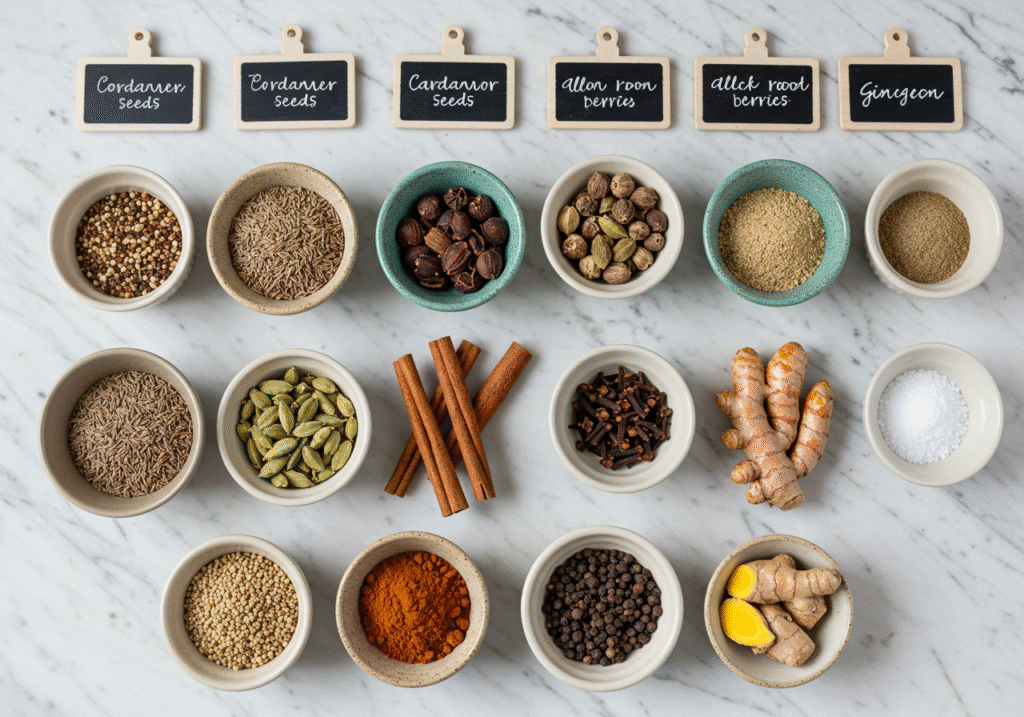
Your Foolproof Moroccan Spice Mix Recipe
This is a simple, toast-grind-mix process that fills your kitchen with the most incredible aroma.
Step 1: Toast the Whole Spices
- In a dry skillet over medium-low heat, add your whole spices: cumin seeds, coriander seeds, black peppercorns, cardamom pods, allspice berries, and cloves.
- Toast them for 2-3 minutes, shaking the pan constantly, until they become fragrant. Be careful not to burn them! You’re waking them up, not putting them to sleep for good.
- Immediately transfer them to a plate to cool. This stops the cooking process.
Step 2: Grind to Perfection
- Once the toasted spices are completely cool, place them in a spice grinder or a high-powered blender.
- Add any pre-ground spices you’re using (ginger, turmeric, paprika, etc.).
- Grind everything into a fine powder. This might take a minute or two.
Step 3: Blend and Store
- Pour your freshly ground spice powder into a small bowl. If you’re using grated nutmeg or cayenne, stir them in now.
- Give it a taste (it will be strong!). This is your moment to adjust—maybe it needs a pinch more paprika for color or another grind of black pepper.
- Transfer your finished Moroccan spice blend to a clean, airtight jar. Store it in a cool, dark place away from the stove and sunlight.
Pro Tip: Let your blend sit for 24 hours before using it. This allows the flavors to “marry” and mellow, creating a more harmonious taste.
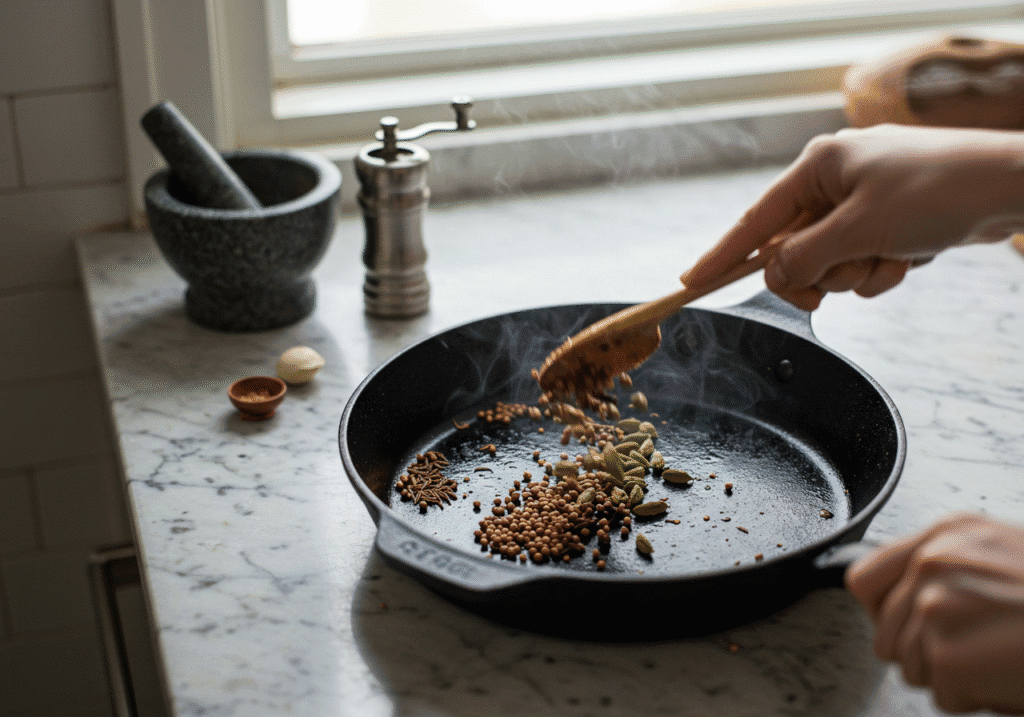
How to Use Your Homemade Ras el Hanout
Now for the fun part! This versatile mix recipe is your secret weapon. Here are some ideas to get you started:
- The Classic Tagine: Rub it on chicken, lamb, or fish before slow-cooking.
- Elevated Roasted Veggies: Toss cauliflower, sweet potatoes, or carrots with olive oil and a generous sprinkle of your blend before roasting.
- Next-Level Rice or Couscous: Stir a teaspoon into your cooking liquid for an instant flavor boost.
- Wonderful Rubs: Mix with a little olive oil to create a paste for grilling or pan-searing meats.
- Comforting Soups and Stews: Add a teaspoon to lentil soup, chickpea stew, or even a simple vegetable broth for incredible depth.
For a perfect dish to use your new blend, try my Simple Moroccan Chicken Tagine Recipe.
Frequently Asked Questions (FAQs)
1. How long does homemade Moroccan spice mix last?
Stored properly in an airtight container in a cool, dark place, your blend will be at its peak flavor for about 3-4 months. The fragrance will gradually fade after that.
2. I’m missing one or two spices. Can I still make it?
Absolutely! The beauty of this mix recipe is its flexibility. If you’re missing cardamom or allspice, you can still make a delicious blend with the core spices. It will be your unique version.
3. What’s the difference between Ras el Hanout and Curry Powder?
While both are complex blends, they hail from different culinary traditions. According to BBC’s exploration of global spices, Ras el Hanout is characterized by warm, sweet spices (cinnamon, nutmeg) and floral notes (cardamom, rose petals), whereas curry powders often feature earthier, more pungent spices like fenugreek, mustard seed, and turmeric as a dominant note.
4. Can I make it completely from pre-ground spices?
You can, but the flavor won’t be as bright and vibrant. Toasting and grinding whole seeds makes a significant difference. If you must use pre-ground, skip the toasting step and simply mix everything in a jar.
5. Is this spice blend spicy hot?
Not typically. It’s more about aromatic warmth than heat. The blend is warm from the ginger and pepper, but not “spicy” like a chili powder. The optional cayenne pepper is the only source of real heat.
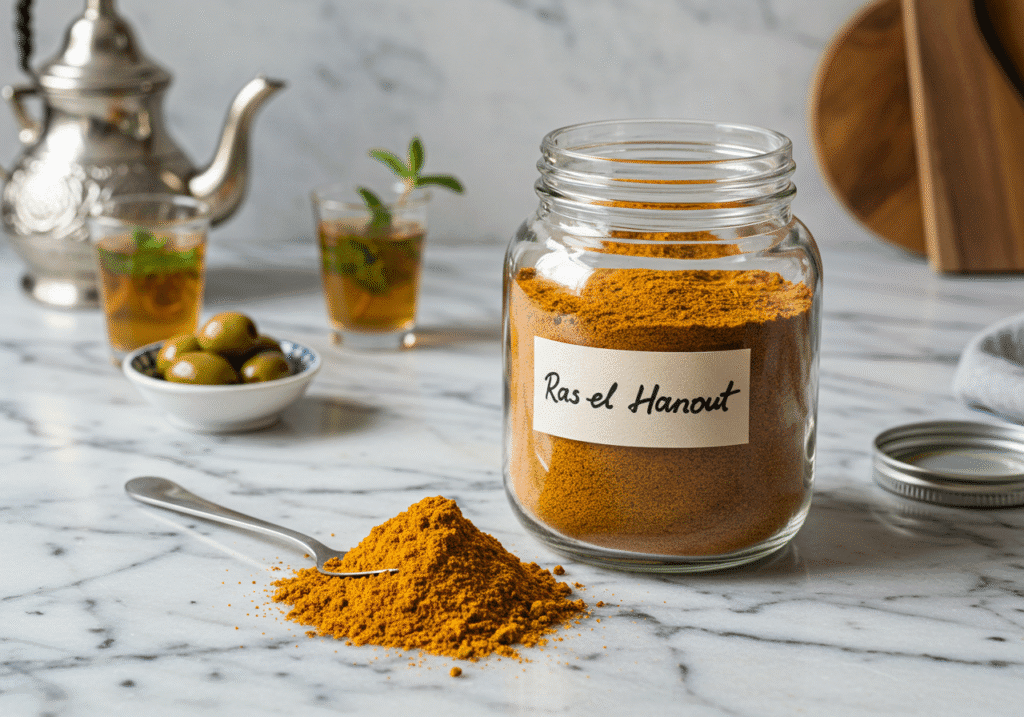
Conclusion
Creating your own Moroccan spice mix is more than just a kitchen task—it’s a sensory journey. You’ve now got a jar full of potential, a secret weapon that can transport your weeknight dinners to the bustling souks of North Africa with just a simple sprinkle.
Remember, this mix recipe is a starting point. Let your palate be your guide. Make a batch, use it, and note what you love. Next time, you can adjust it to become perfectly, uniquely yours.
I’d love to hear about your spice-blending adventure! What variations did you try? What’s the first dish you made with your homemade Ras el Hanout? Share your experiences and photos in the comments below—let’s inspire each other! And if you found this guide helpful, please share it with a fellow food lover.
Author Bio: Nora is a culinary explorer and spice enthusiast with a passion for demystifying world cuisines for home cooks. After falling in love with the flavors of Morocco during her travels, she’s dedicated to helping beginners bring that same magic into their own kitchens.

